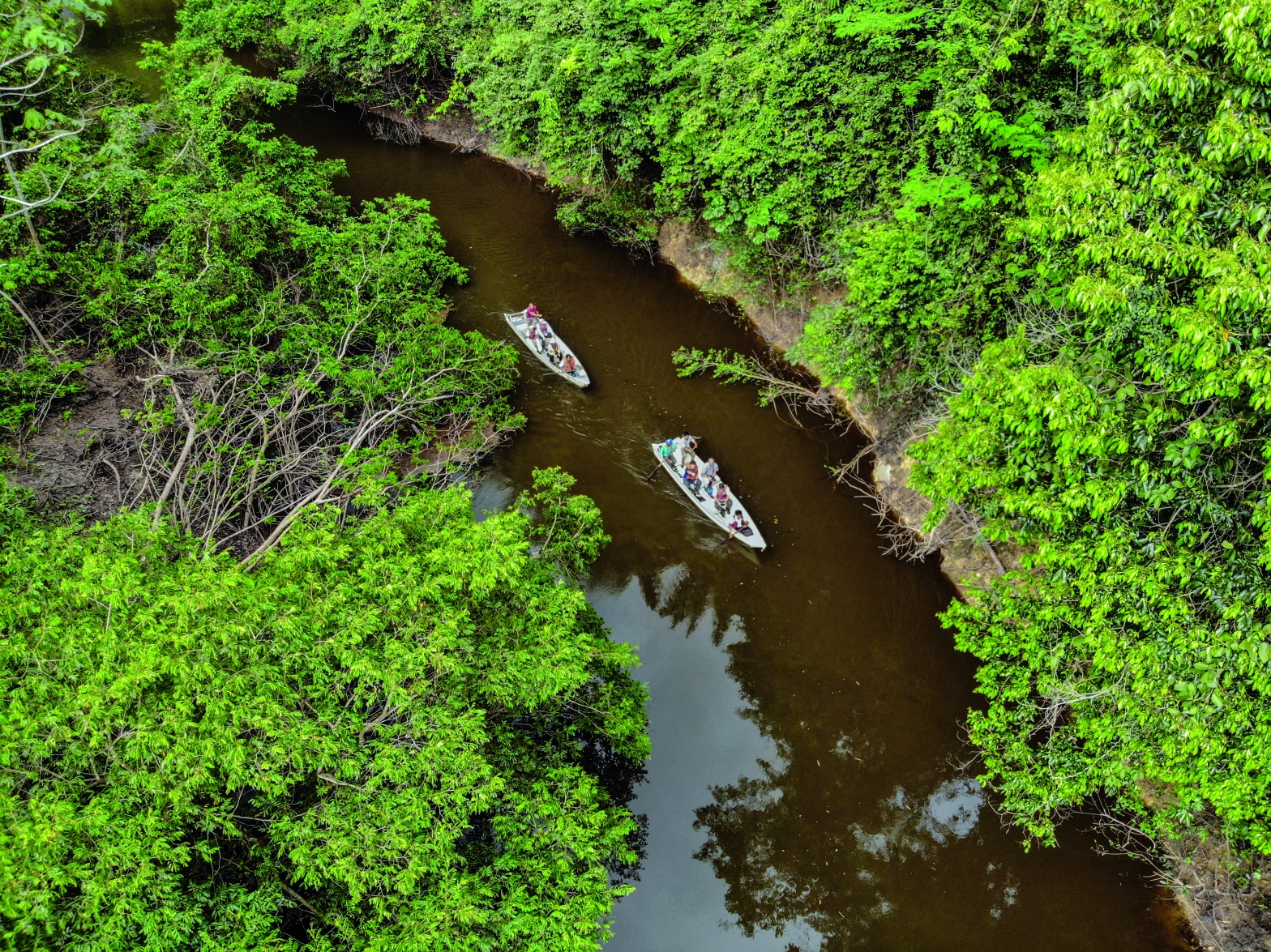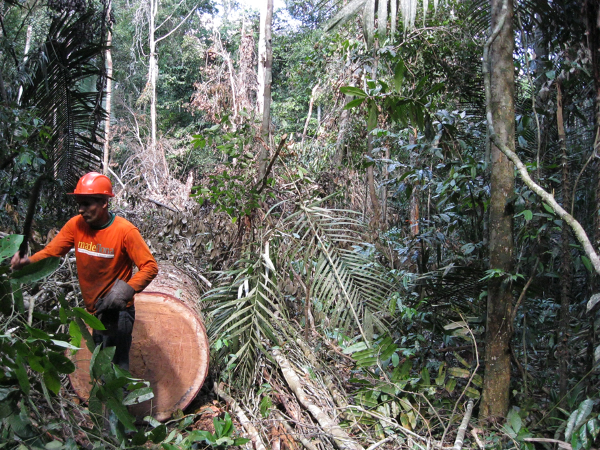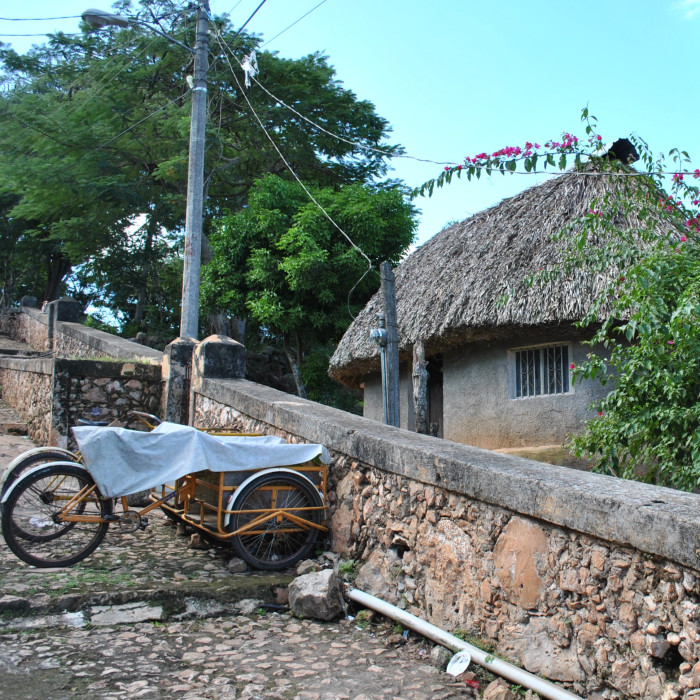
The Amazon, the largest tropical forest in the world, has played a vital role in absorbing carbon dioxide from the atmosphere and helping offset some global warming. Within the several last decades, deforestation and global warming have affected precipitation and temperature, which could significantly impact the Amazon’s ability to uptake carbon. Forest loss within the region accounts for 17% of the total area, with most of the area being converted to agricultural lands. Previous studies showed that in the last few years a decline in carbon uptake by trees in the Amazon occurred (Briennen et al., 2015), with an increase in tree mortality (Muelbert-Esquievel, et al., 2020).
Our recent study published in Nature (Gatti et al., 2021), showed that carbon dioxide (CO2) fluxes between 2010 and 2018 greatly declined in some regions of the Amazon using 590 aircraft vertical profiling measurements of lower-tropospheric concentrations of carbon dioxide and carbon monoxide at four sites in Amazonia (the northwest, northeast, southwest and southeast). These vertical profiles extend from near the surface to approximately 4.5 km above sea level and are collectively sensitive to surface fluxes from a large fraction of Amazonia. CO is used to determine the fraction of the total flux (resultant of all natural and anthropogenic process) derived from biomass burning emissions. Then, removing biomass burning emissions from total emissions we obtained the net biome exchange.

Combining fluxes from all the four sites to calculate a total Amazonia carbon balance for nine years, we found a total emission of 0.29 ± 0.40 Pg C yr−1, where fire emissions represent 0.41 ± 0.05 Pg C yr−1, with a net biome exchange removing 31% of fire emissions from the atmosphere. Here, notable differences were found in carbon emissions. The east Amazon region, which represents 24% of Amazonia (and where 27% has been deforested), is responsible for 72% of total Amazonian carbon emissions, with 62% of emissions stemming from fires.

As for the carbon emissions, we found that eastern and western Amazonia sites differ substantially with regard to human impact, in particular deforestation, and also with regard to long-term climate trends, with considerable regional contrasts in temperature and precipitation trends, mainly in the dry season. Over the last 40 years (1979-2018) the east Amazon has higher warming rates and reduction in precipitation, mainly during the dry season, than west Amazon. This was particularly pronounced in the Southeast region during the dry season with an increase in the mean temperature of 2.54º C and precipitation decreasing by 24%, suggesting an increasing in plant stress. Furthermore, a net carbon emission was observed during the nine-years in this region, suggesting that temperature and water availability in the soil significantly impact the vegetation carbon balance, at least in the southeast Amazon.

These results help us to better understand the long-term impacts of interactions between climate and human disturbances on the Amazonian carbon balance. Given the current uncertainties regarding the future of tropical forests’ capacity to absorb large amounts of carbon, we must consider what could happen to central and western Amazonian regions if human disturbances continue. Additionally, the decline in the carbon uptake capacity is a strong case for ensuring we reduce even more fossil-fuel emissions if we want to limit the global mean temperature to 1.5º C as proposed by the Paris Agreement.
About the Author: Dr. Luana S. Basso is a biologist and Visiting Research Fellow at University of Leeds, United Kingdom, as part of her Postdoctoral Research Fellow at National Institute for Space Research (INPE), Brazil. She holds a PhD and Master degree in Science at Universidade de São Paulo. She has over ten years of experience in tropical forest carbon balance, focused on understanding the role of the Amazon in the emission/absorption of Greenhouse Gases (mainly methane and carbon dioxide) and the impacts of climate change and anthropogenic activities on these balances. Twitter: @LuanaBasso16. ResearchGate: Luana-Basso E-mail: luanabasso@gmail.com.
References:
Brienen, R., Phillips, O., Feldpausch, T. et al. Long-term decline of the Amazon carbon sink. Nature 519, 344–348 (2015). https://doi.org/10.1038/nature14283
Esquivel-Muelbert, A., Phillips, O.L., Brienen, R.J.W. et al. Tree mode of death and mortality risk factors across Amazon forests. Nat Commun 11, 5515 (2020). https://doi.org/10.1038/s41467-020-18996-3
Gatti, L.V., Basso, L.S., Miller, J.B. et al. Amazonia as a carbon source linked to deforestation and climate change. Nature 595, 388–393 (2021). https://doi.org/10.1038/s41586-021-03629-6








